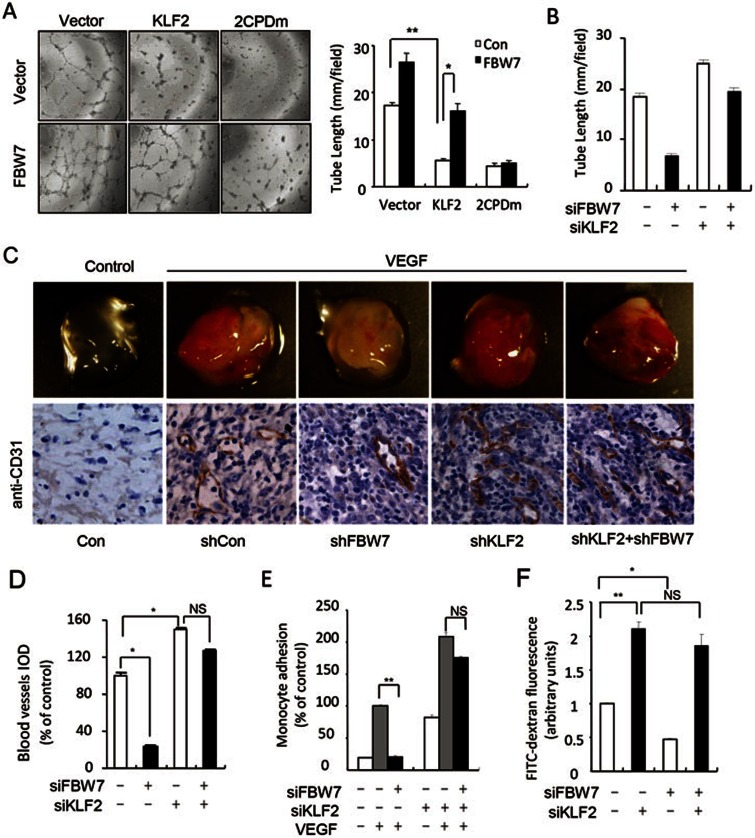Figure 5.
FBW7 negatively regulated endothelial KLF2 function. (A) FBW7 reduced the inhibitory effect of KLF2 on angiogenesis. 2CPDm, KLF2 T171A/S175A/T243A/S247A mutant; Column, the means from three independent experiments with duplicates; bar, SD; *P < 0.05; **P < 0.01 vs control. (B) Knockdown of KLF2 reduced the inhibitory effect of FBW7 on the tube formation. (C) Knockdown of KLF2 reduced the inhibitory effect of FBW7 on angiogenesis in vitro. Mice were injected with 0.5 ml of Matrigel containing the indicated lentivirus. Angiogenesis in the intact Matrigel plugs was examined after 7 days (n = 5). Plug sections of 5 μM were immunostained with a specific anti-CD31 antibody for blood vessels. The images were captured using a Leica DM 4000B photo microscope (magnification, 400×). Arrows, blood vessels. (D) Quantification of blood vessels from C, and the images were captured. The data are presented as the mean and standard error (n = 3). IOD, Integrated Optical Density. *P < 0.05; **P < 0.01; NS, not significant. (E) FBW7 affected KLF2-mediated adhesion of U937 cells to HUVECs. U937 cells were labeled with CFSE and the adhesion of U937 cells to the transfected HUVECs was recorded using a microscope. **P < 0.01; NS, not significant. (F) The depletion of FBW7 decreased thrombin-induced endothelial leakage. HUVECs were transfected as indicated, treated with thrombin (1 U/mL), and the leakage assay was performed to measure the FITC-dextran passage. *P < 0.05; **P < 0.01; NS, not significant.

